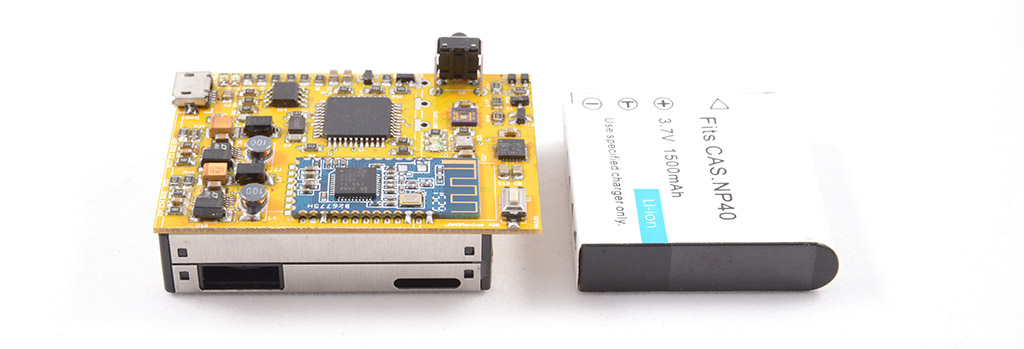
After developing several hardware products and running two crowdfunding campaigns, some lessons were learned. I’d like to show you how these conclusions are driving the current development, in an effort of bringing the uRADMonitor solution even closer to its purpose. Community feedback getting into production is not new for uRADMonitor, and it was used in the past for many of the features included in the uRADMonitor D.
Many start-up businesses – especially those in the tech field – start from the premises that a complicated software or hardware product (from an engineering point of view) will automatically be a success on the market and the authors put the equal sign between complexity and success. Unfortunately, the reality is different, and an approach with greater chances of succeeding is to provide an elementary thing: a product that other people need. And people generally have simple needs.

Next, shaping an idea to a product that finds its place on any given markert is a long term process, that requires multiple iterations to refine the product before the desired functionality is achieved. Investing all initial available energy in a one shot attempt will likely result in complete failure.

All in one, here’s some of the things I learned so far, mostly related to the end user market:
– various markets have different expectations from the same product. An air monitor designed for home use and end users will have to look different then an industrial unit. Here aesthetics is important beyond what’s under the hood.
– a good design can make a huge difference on production costs. This is related not only to the BOM (Bill of Materials) but also to the assembling and testing procedures, as those take equal parts in the production chain.
– maintainance is a stealth killer. Build your products with care, or you’ll collapse under the burden of offering support. More products scale this responsability
– for air monitoring, mobile units cover more ground with lesser costs
– for mobile air monitoring units, those that are closer to the places where people do their daily activities are more relevant.
– product cost can be a problem, so a balance must be maintained between features and functionality and the tag price.
These are important as they are directly impacting the project’s roadmap. Some of these were graduatelly addressed during the previous development, and the rest with a new product that will be released during early next year.
The First Wearable – uRADMonitor AIR
An Air Quality monitoring wearable will generate data to unprecedented resolution in exactly those locations where people live their lives, increasing the usefulness and the relevance. The new uRADMonitor AIR device is envisioned as a low weight, low power wearable, sensing pollution via the excellent BME680 sensor from Bosch. A BLE link to a smartphone is all that it takes to visualise the data, but also send it in the background to the uRADMonitor servers. A CC2541 will handle the BLE natively and thanks to the 8051 core will do the additional computation to read the BME680 via I2C and send the data to a smartphone. All components fit the low energy requirement while delivering precious air quality measurements: temperature, pressure, humidity and volatile organic compounds (VOC).

From the first sketch things were refined and the uRADMonitor AIR is now designed with 5.5Wh rechargeable battery, a high precision Particulate Matter PM2.5 laser scattering sensor, an Ultraviolet sensor and the BME680 from Bosch for temperature, pressure, humidity and volatile organic compounds.

The device connects to your smartphone via Bluetooth to send all measurements in real time. The phone then works as a relay, sending all data online, to the uRADMonitor server so big data analysis can be performed on the sets. You can check the pollution your were exposed to while running, while in traffic or wherever you are. The readings are mapped to location, using phone’s GPS receiver. This will be very similar to the model D hardware, but at a fraction of the cost.
Release date
The uRADMonitor AIR will likely be available in Q1 2018. Keep an eye on the blog for more posts on this topic.
Updates
The first uRADMonitor AIR prototype was prepared for the IOT/WT Innovation World Cup 2018 in Munchen. To meet the short deadline, first a 3D printed enclosure was made:

Right before the conference, the Android software has been finalized. This was used to connect to the uRADMonitor AIR via Bluetooth Low Energy (BLE), and relay all measurements via the phone’s 3G/4G connection to the central uRADMonitor server.

The first prototype was installed at the outside of the car, while driving to the event’s location in Munchen. Precious Particulate Matter PM2.5 measurements were recorded demonstrating great flexibility for this low cost environmental detector mainly intended as a wearable:

On the return from Munchen, the device was once again installed on the outside of the car, with some interruptions due to snow. This way it gathered about 15K datapoints from all across Europe! This shows a huge potential for Environmental monitoring using low cost hardware. It also increases awareness of the individuals using this technology and helps them protect their health.

codemore code
~~~~